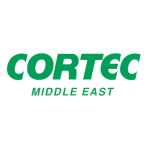Introduction:
In the fast-paced world of industrial machinery, rust is a silent menace that may cause havoc if left unchecked. From factory floors to construction sites, equipment is constantly exposed to moisture and factors that promote rust formation.
But do not be afraid! In this article, we will delve into the world of industrial rust removal techniques, providing you with a wealth of best practices for keeping your machinery in top condition.
Understanding Rust:
To effectively remove rust, it's important to first understand what it is and why it's such a problem. Rust, also known as iron oxide, is formed when iron combines with oxygen and moisture in the air.
This chemical reaction weakens the metal, causing structural integrity difficulties and eventual failure if not treated immediately.
Prevention is Key:
Preventing rust formation is preferable to removing it once it has formed. Implementing preventive actions can considerably increase the life of your machines.
Consider using rust-resistant coatings, such as paints or specialty sealants, to form a barrier against moisture and oxygen.
Routine Maintenance:
Routine maintenance involves regular inspections, which are essential for proper machinery maintenance. Set up routine checks to detect any signs of rust buildup early on.
Pay particular attention to weak points such as joints, hinges, and exposed metal surfaces. Minor rust patches should be addressed as soon as possible to avoid them becoming big problems later on.
Chemical Rust Removal:
Chemical rust removal is effective for removing rust that has already formed. There are several rust removal products on the market, each geared to a distinct level of rust severity.
These products often contain rust-dissolving acids or inhibitors, which dissolve the rust without causing damage to the underlying metal. When using chemical rust removers, make sure to follow the manufacturer's recommendations and wear suitable safety gear.
Mechanical Techniques:
Mechanical techniques may be necessary for removing rust from complicated machinery parts. Sanding, wire brushing, and abrasive blasting are all efficient ways for removing rust coatings.
However, use caution to avoid aggressive abrasion, which may jeopardize the metal's integrity. It's best to begin with the least aggressive way and gradually escalate as needed.
Electrolysis:
Electrolysis is a prominent rust removal technology in industrial settings due to its environmental benefits. This process includes soaking the corroded metal in an electrolyte solution and conducting an electric current through it.
The electric current causes rust to separate from the metal surface and migrate to a sacrificial anode. Electrolysis is very effective on delicate or intricate sections where mechanical abrasion is impractical.
Post-Treatment Care:
After successfully removing rust, it's important to follow up with post-treatment maintenance to prevent recurrence. Apply rust inhibitors or protective coatings to cleaned surfaces to prevent further corrosion.
Regular maintenance, including cleaning and lubrication, will protect your machinery from corrosion and assure peak performance.
Conclusion:
Removing industrial rust is a critical part of machinery maintenance that requires care. By taking a proactive approach and using the proper techniques, you may extend the life of your equipment and reduce downtime due to corrosion-related issues. Remember, prevention is always preferable to cure, but armed with the knowledge from this book, you'll be well-prepared to face rust head on and keep your gear working smoothly for years to come.





.jpg)
Comments